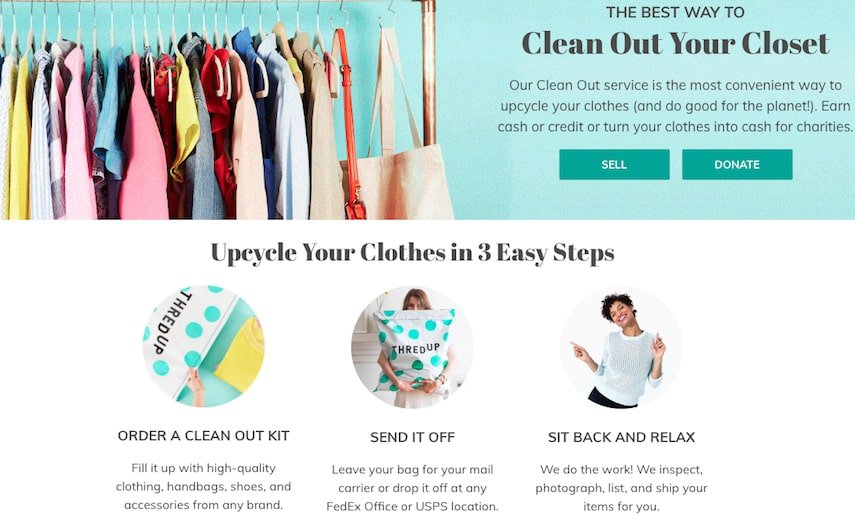Why Selling Your Clothes Online is a Great Idea
Selling clothes online has become a popular way to declutter your closet, make some extra money, and reduce waste. With the growing demand for second-hand clothing, online marketplaces have made it easier than ever to turn your gently used clothes into cash. In fact, the online second-hand market is expected to continue growing, with more and more consumers turning to online platforms to buy and sell pre-owned clothing.
One of the main benefits of selling clothes online is the convenience it offers. With just a few clicks, you can list your items and reach a global audience. This is especially useful for those who live in areas with limited local marketplaces or who want to sell items that are no longer in season. Additionally, online marketplaces often provide a range of tools and services to help you sell your clothes quickly and efficiently, including pricing guides, shipping labels, and customer support.
Another advantage of selling clothes online is the potential to make a significant amount of money. While you may not get the full original price of your items, you can still earn a decent profit, especially if you’re selling high-end or designer clothing. Furthermore, online marketplaces often have a large customer base, which increases the chances of selling your items quickly.
When searching for where to sell your clothes online, consider the various options available. From general online marketplaces like eBay and Amazon to specialized platforms like Poshmark and ThredUp, there are many websites that cater to different types of clothing and target audiences. By choosing the right platform for your items, you can increase your chances of selling them quickly and for a good price.
Overall, selling clothes online is a great way to declutter your closet, make some extra money, and reduce waste. With the growing demand for second-hand clothing and the convenience of online marketplaces, it’s easier than ever to turn your gently used clothes into cash. So, if you’re looking for where to sell your clothes online, consider the various options available and start selling today!
How to Prepare Your Clothes for Online Sales
When it comes to selling your clothes online, preparation is key. To increase your chances of selling your items quickly and for a good price, it’s essential to present them in the best possible light. This starts with cleaning and ironing your clothes to make them look their best. Remove any stains or odors, and consider steaming or dry cleaning items that require special care.
High-quality photos are also crucial when selling clothes online. Use good lighting and a clear background to showcase your items from different angles. Consider using a mannequin or model to show how the clothes fit, and include photos of any flaws or defects. This will help build trust with potential buyers and reduce the risk of returns.
Accurate descriptions and measurements are also vital when selling clothes online. Include details such as the fabric, size, color, and condition of the item, as well as any flaws or defects. Use a tape measure to take accurate measurements, and consider including a size chart to help buyers determine the best fit.
When creating your listings, make sure to include all the necessary information, such as the price, shipping details, and return policy. Use relevant keywords to help buyers find your items, and consider offering discounts or promotions to attract more buyers.
By taking the time to properly prepare your clothes for online sales, you can increase your chances of selling them quickly and for a good price. Whether you’re looking for where to sell your clothes online or just starting out, following these tips will help you get started on the right foot.
Some popular tools for preparing your clothes for online sales include photo editing software, such as Adobe Lightroom or Photoshop, and listing templates, such as those offered by eBay or Poshmark. Consider investing in a good camera or smartphone with a high-quality camera to take clear and well-lit photos.
Additionally, consider the packaging and shipping of your items. Use sturdy packaging materials, such as boxes or bags, and consider offering free shipping or discounted rates for bulk purchases. This will help attract more buyers and increase your chances of selling your items quickly.
Top Online Marketplaces to Sell Your Clothes
When it comes to selling your clothes online, there are numerous marketplaces to choose from. Each platform has its own unique features, fees, and target audiences. Here are some of the top online marketplaces to sell your clothes:
eBay is one of the most popular online marketplaces, with over 183 million active buyers. It’s a great platform for selling a wide range of clothing items, from casual wear to designer brands. eBay charges a listing fee of $0.30 per item, and a final value fee of 8% to 12.5% of the sale price.
Poshmark is a social commerce platform that allows users to buy and sell gently used clothing and accessories. It’s a great platform for selling trendy and fashionable items, with a strong focus on community and social sharing. Poshmark charges a flat fee of $2.95 for items under $15, and 20% of the sale price for items over $15.
ThredUp is an online consignment store that specializes in gently used women’s and children’s clothing. It’s a great platform for selling high-end or designer items, with a strong focus on quality and authenticity. ThredUp charges a commission fee of 10% to 15% of the sale price.
Other popular online marketplaces for selling clothes include ASOS Marketplace, Depop, and The RealReal. Each platform has its own unique features and fees, so it’s essential to research and compare them before deciding where to sell your clothes online.
When choosing an online marketplace, consider the following factors: fees, target audience, user interface, and shipping options. Look for platforms that align with your selling goals and target audience, and don’t be afraid to try out multiple platforms to see which one works best for you.
Remember, selling clothes online requires a strategic approach. By choosing the right platform, preparing your items for sale, and pricing them competitively, you can increase your chances of selling your clothes quickly and for a good price. Whether you’re looking for where to sell your clothes online or just starting out, these top online marketplaces are a great place to start.
The Pros and Cons of Specialized Clothing Platforms
When it comes to selling clothes online, there are many platforms to choose from. While general online marketplaces like eBay and Amazon can be a good option, specialized clothing platforms can offer a more targeted approach. In this section, we’ll explore the pros and cons of using specialized platforms like Depop, ASOS Marketplace, and The RealReal.
Depop is a social commerce platform that allows users to buy and sell a wide range of clothing items, from streetwear to luxury fashion. One of the main advantages of Depop is its strong focus on community and social sharing. Users can share their listings on social media platforms like Instagram and Facebook, making it easier to reach a wider audience. However, Depop’s commission fees can be steep, ranging from 10% to 15% of the sale price.
ASOS Marketplace is another popular platform for selling clothes online. It’s a great option for sellers who want to reach a large and fashion-conscious audience. ASOS Marketplace charges a commission fee of 10% to 15% of the sale price, and offers a range of tools and services to help sellers manage their listings and shipments.
The RealReal is a luxury consignment store that specializes in authenticated designer goods. It’s a great option for sellers who want to sell high-end or rare clothing items. The RealReal charges a commission fee of 15% to 20% of the sale price, and offers a range of services to help sellers authenticate and price their items.
One of the main advantages of using specialized clothing platforms is their focus on fashion and style. These platforms often have a strong community of fashion-conscious buyers and sellers, making it easier to connect with people who are interested in your items. Additionally, specialized platforms often offer a range of tools and services to help sellers manage their listings and shipments.
However, there are also some disadvantages to using specialized clothing platforms. For example, commission fees can be steep, and some platforms may have strict guidelines and rules for sellers. Additionally, some platforms may not offer the same level of exposure as general online marketplaces like eBay or Amazon.
Ultimately, whether or not to use a specialized clothing platform depends on your specific needs and goals as a seller. If you’re looking to sell high-end or luxury clothing items, platforms like The RealReal may be a good option. However, if you’re looking to sell a wide range of clothing items, general online marketplaces like eBay or Amazon may be a better choice.
How to Price Your Clothes Competitively
Pricing your clothes competitively is crucial when selling online. It can make or break a sale, and affect your reputation as a seller. In this section, we’ll explore the best practices for pricing your clothes competitively, and provide tips on how to research similar items, consider the original price, and factor in shipping costs.
Researching similar items is a great way to determine the market value of your clothes. Look for similar items on online marketplaces like eBay, Poshmark, and ThredUp, and take note of their prices. You can also use tools like Google Shopping or PriceGrabber to compare prices across different websites.
Considering the original price of your clothes is also important. If you’re selling a designer item, for example, you may want to price it higher than a similar item from a fast fashion brand. However, be realistic about the price you can get for your item, and don’t overprice it.
Factoring in shipping costs is also crucial when pricing your clothes competitively. Make sure to include the cost of shipping in your price, and consider offering free shipping or discounted rates for bulk purchases.
Another important factor to consider when pricing your clothes competitively is the condition of the item. If your item is in excellent condition, you may be able to price it higher than a similar item that is worn or damaged.
Finally, keep an eye on your competition and adjust your prices accordingly. If you notice that similar items are selling for lower prices, you may want to consider lowering your price to stay competitive.
By following these tips, you can price your clothes competitively and increase your chances of selling them online. Remember to stay flexible and adjust your prices as needed, and don’t be afraid to negotiate with buyers.
When searching for where to sell your clothes online, consider the fees and commission rates of each platform. Some platforms may charge higher fees than others, so make sure to factor those costs into your pricing strategy.
By pricing your clothes competitively and using the right online marketplaces, you can turn your closet into cash and make some extra money. Happy selling!
Creating a Compelling Listing: Tips and Tricks
When it comes to selling clothes online, a well-crafted listing can make all the difference in attracting potential buyers and standing out from the competition. A compelling listing is one that accurately showcases the item, highlights its best features, and provides essential details that buyers need to know. Here are some tips and tricks to help create a listing that will grab attention and drive sales.
First and foremost, the title of the listing should be attention-grabbing and descriptive. This is often the first thing that buyers will see, so it’s essential to make it count. Include relevant keywords, such as the brand name, style, and size, to help buyers find the item when searching online. For example, “Gently Used Women’s Nike Running Shoes, Size 8” is a clear and concise title that tells buyers exactly what they’re getting.
When it comes to writing the description, be detailed and accurate. Include information about the item’s condition, material, and any flaws or defects. This will help build trust with potential buyers and reduce the risk of returns or disputes. Use a friendly and approachable tone, but avoid using overly promotional language or exaggerating the item’s features.
High-quality photos are also essential for creating a compelling listing. Use good lighting and a clear background to showcase the item from different angles. Consider using lifestyle shots that show the item being worn or used, as this can help buyers visualize how they might wear or use the item themselves.
Finally, don’t forget to include relevant keywords and tags to help buyers find the item when searching online. Use keywords like “gently used,” “women’s clothing,” or ” designer brands” to attract buyers who are searching for specific types of items. By following these tips and tricks, sellers can create a compelling listing that will attract buyers and drive sales.
For those wondering where I can sell my clothes online, creating a compelling listing is key to success on platforms like eBay, Poshmark, and ThredUp. By showcasing items in the best possible light and providing essential details, sellers can increase their chances of making a sale and building a positive reputation online.
Shipping and Handling: Best Practices for Sellers
Once a sale is made, the next step is to ensure that the item is shipped to the buyer in a timely and efficient manner. Reliable shipping is crucial to building trust with customers and maintaining a positive reputation as a seller. Here are some best practices for shipping and handling to help sellers provide excellent customer service.
Packaging is a critical aspect of shipping. Use sturdy boxes and materials that can withstand the rigors of transit. Make sure to wrap items carefully to prevent damage, and consider using bubble wrap or tissue paper for fragile or delicate items. Clearly label the package with the buyer’s address and any relevant handling instructions.
Calculating shipping costs can be a challenge, but it’s essential to get it right. Research different shipping carriers and compare rates to find the best option for your items. Consider using a shipping calculator to estimate costs and factor in any additional fees for services like tracking or insurance.
Tracking is an essential part of shipping, as it allows buyers to monitor the progress of their package. Use a shipping carrier that provides tracking information, and make sure to share this with the buyer once the package has shipped. This will help to build trust and reduce anxiety about the status of the package.
Providing excellent customer service is critical to building a positive reputation as a seller. Respond promptly to buyer inquiries, and be proactive in resolving any issues that may arise during shipping. Consider offering refunds or replacements if items are damaged or lost during transit.
For those wondering where I can sell my clothes online, shipping and handling is a critical aspect of the sales process. By following these best practices, sellers can provide excellent customer service and build a positive reputation on platforms like eBay, Poshmark, and ThredUp. By taking the time to package items carefully, calculate shipping costs accurately, and provide tracking information, sellers can ensure that their items arrive safely and efficiently, and build trust with their customers.
In addition to these best practices, consider using shipping software to streamline the process and save time. These tools can help to automate tasks like printing labels and tracking packages, making it easier to manage multiple sales and shipments. By investing in shipping software, sellers can provide better customer service and increase their chances of success in the competitive world of online sales.
Maximizing Your Sales: Promoting Your Listings and Building a Reputation
Once you’ve created a listing and set a competitive price, it’s time to promote your item and attract potential buyers. In today’s digital age, social media marketing is a powerful tool for reaching a wide audience and driving sales. Share high-quality photos of your item on platforms like Instagram, Facebook, and Twitter, and use relevant hashtags to increase visibility.
Collaborations are another effective way to promote your listings and build a reputation as a seller. Partner with other sellers or influencers in your niche to reach new audiences and gain exposure. You can also participate in online communities related to fashion or sustainability to connect with potential buyers and showcase your items.
Responding to customer inquiries is crucial to building trust and providing excellent customer service. Be prompt and courteous in your responses, and make sure to address any concerns or questions that buyers may have. This will help to build a positive reputation and increase the chances of making a sale.
Building a positive reputation as a seller is essential to long-term success in online marketplaces. Focus on providing excellent customer service, and encourage buyers to leave feedback and reviews. This will help to establish trust and credibility, and attract more buyers to your listings.
For those wondering where I can sell my clothes online, promoting your listings and building a reputation is key to success. By leveraging social media marketing, collaborations, and excellent customer service, sellers can increase their visibility, attract more buyers, and build a positive reputation in online marketplaces like eBay, Poshmark, and ThredUp.
In addition to these strategies, consider using email marketing to promote your listings and stay in touch with buyers. Build an email list of subscribers who are interested in your items, and send regular newsletters with updates on new listings, promotions, and discounts. This will help to keep your brand top of mind and drive sales over time.
Finally, don’t underestimate the power of word-of-mouth marketing. Encourage happy buyers to share their experiences with friends and family, and offer incentives for referrals. This will help to build a loyal customer base and drive sales through positive recommendations.






